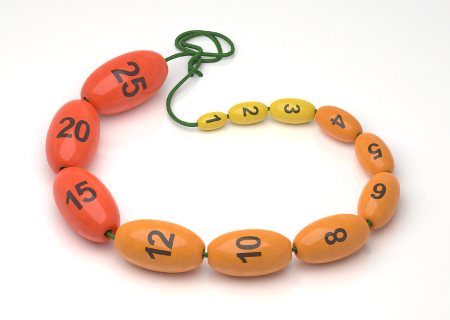History and exam
Key diagnostic factors
common
infertility
The most common presenting symptom, affecting >99% of men with KS.[4]
More than 90% of men with KS are azoospermic.[2]
The great majority of diagnoses of KS are made in men who are undergoing evaluation for infertility.[3][4]
The European Academy of Andrology recommends karyotype analysis for KS in any man with non-obstructive azoospermia or severe oligozoospermia (total sperm count <10 million/ejaculate or sperm concentration <5 x 10⁶/mL).[3]
The prevalence of KS is 3% to 4% among all infertile men, 6% among those with a total sperm count <10 million/ejaculate, and 10% to 15% in those with non-obstructive azoospermia.[3]
failure to complete pubertal maturation
small testes
The only clinical examination feature reliably seen in individuals with KS is small testes from mid-puberty onwards. The testes may be firm or soft.[2][4][14][18] Testicular volume can be measured using the Prader orchidometer.
The testes are typically normal in size or only slightly small in pre-pubertal childhood.
They begin to enlarge normally at the onset of puberty, typically around 11-12 years of age. However, they rarely progress beyond a bi-testicular volume of 10 mL and this is then followed by involution, with the testes shrinking to around 3-5 mL (the size of an almond kernel) in older adolescents due to the onset of hypogonadism.[2][4]
Bi-testicular volume is <6 mL in >95% of adult men with KS.[1][26]
Rarely, in severe phenotypes, a boy may be born with reduced testicular volume due to intrauterine hypogonadism.[3] [Figure caption and citation for the preceding image starts]: Prader orchidometerCreated by BMJ Knowledge Centre [Citation ends].
expressive speech delay in early childhood
Delayed speech development has been reported in 40% of children with KS.[1][4] Expressive verbal ability is most often affected; toddlers may be slow to start speaking but their receptive comprehension is usually normal.[2][21]
Among adolescents with KS, deficits in expressive language skills are more common than in peers without KS.[3]
uncommon
micropenis
Rarely, in severe phenotypes, a boy may be born with micropenis (stretched length ≥2.5 standard deviations [SD] below the mean for age) due to intrauterine hypogonadism.[3] KS is part of the differential diagnosis if examination of a newborn boy identifies this sign.[2][3]
Decreased penile size is seen in 10% to 25% of boys with KS but it is very rare for them to fulfil the criteria for micropenis.[3]
cryptorchidism
In rare cases, newborn boys with KS may have cryptorchidism although this is very rare.[3] KS is part of the differential diagnosis if examination of a newborn boy identifies this sign.[2][3]
For more information, see Cryptorchidism.
Other diagnostic factors
common
developmental delay
Learning and developmental delays are most commonly noted between 1-5 years of age but are non-specific and do not necessarily point to the diagnosis.[13][17][20]
Some degree of learning disability has been reported in >75% of boys with KS.[1][4]
Some boys with KS have problems with attention and executive cognitive function, which can lead to expressions of frustration.[2][3]
Boys with KS will often be receiving special educational support.[1][2][3]
In rare cases, a boy with KS may be very slow to start walking and KS will be identified on chromosomal testing.[22]
behavioural problems in childhood
Common in boys with KS.
Infants are sometimes reported as being easy to manage and not as demanding as their siblings.[2]
Boys with KS may be quiet and passive, but impulsivity may be present and difficulties with self-expression and executive tasks may lead to temper tantrums and anger outbursts.[2][23]
One population-based study found an increased risk of attention deficit hyperactivity disorder (ADHD) and autism spectrum disorders among individuals with KS.[24]
tall stature
Affects around 30% of KS individuals and is believed to be due to the presence of three copies of the SHOX gene.[1][2][4][23]
Infant length is typically within age-related norms.
The rate of height increase tends to accelerate throughout childhood so that by school age, boys with KS may be on a higher centile than predicted (based on mid-parental height and/or compared with siblings).[2]
Look for an upward shift in height centiles during childhood.
Tall individuals with KS have disproportionately longer legs.[3][4]
However, extreme tall stature is unusual.[2]
lack of facial and pubic hair
gynaecomastia
sexual dysfunction/reduced libido
high fat-to-muscle ratio/abdominal obesity
Weight gain can begin in childhood or adolescence and often persists into adulthood.
Central obesity ('pot belly' and wider hips) is common after the adiposity rebound at 6-7 years.[2]
A high abdominal fat mass, together with decreased muscle mass and strength, are present in around half of adolescents with KS but are very non-specific signs.[2][4]
Obesity is often seen in adulthood, particularly around the abdomen and hips.[2][3]
social/ psychological issues
fatigue
Fatigue/lethargy is a non-specific finding that is common in individuals with hypogonadism.
Risk factors
Use of this content is subject to our disclaimer